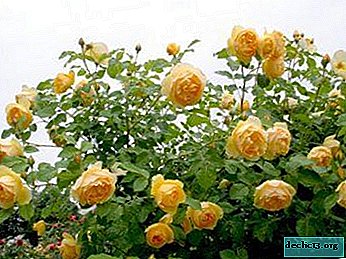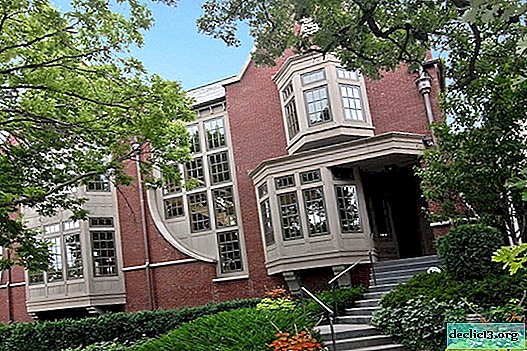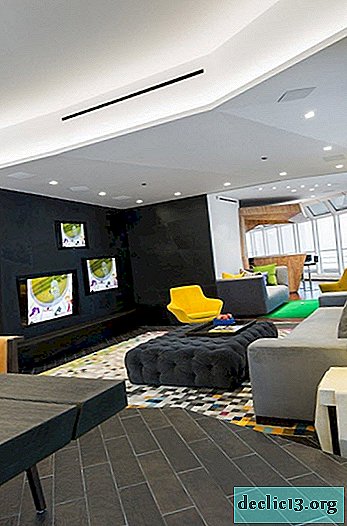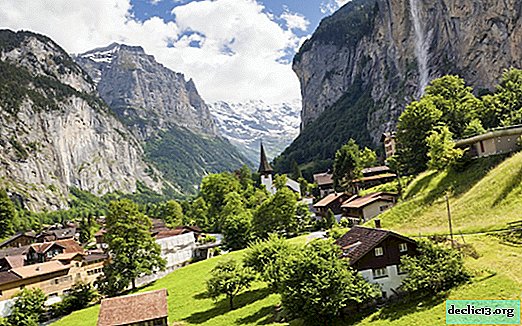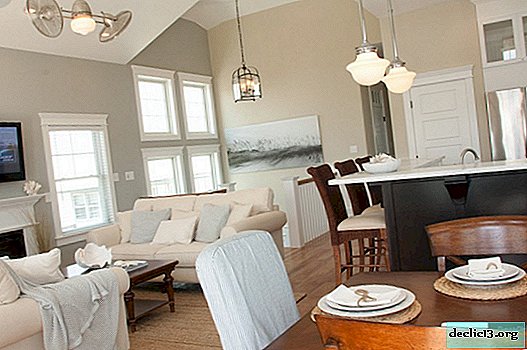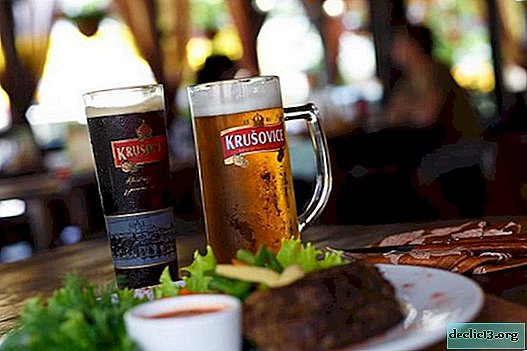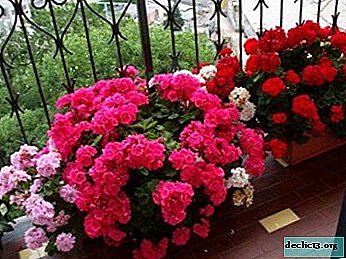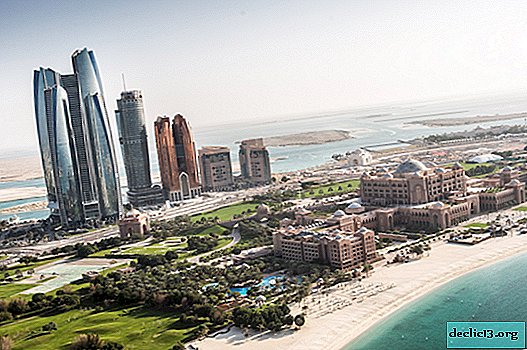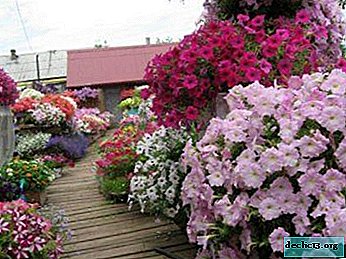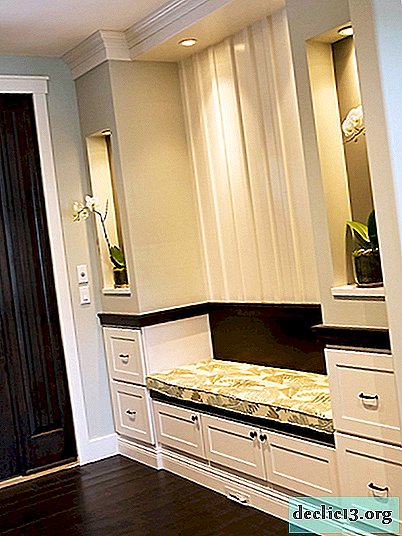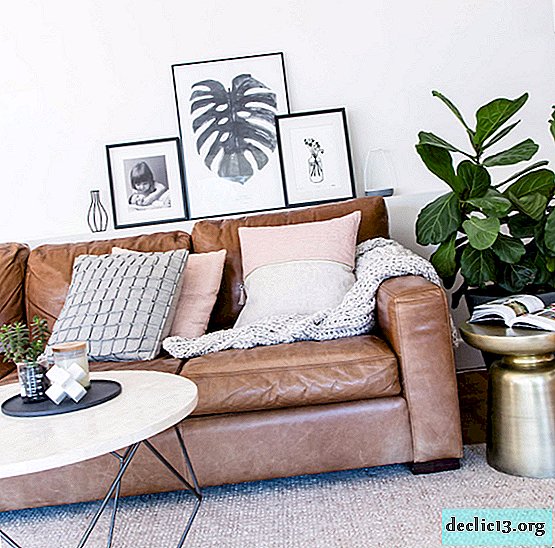Goa, India - golden sand beaches and a rich history
The main attractions of Goa are not only spacious beaches and the endless sea, but also ancient Catholic churches, cozy streets, cobblestone, powerful fortresses and waterfalls.
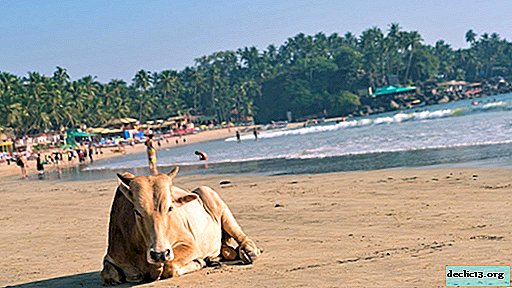
The Indian state of Goa is very popular with tourists. However, while the southern part is famous for its picturesque nature and golden sand beaches, then North Goa combines both many places to relax on the seashore and a large number of historical attractions. The capital of Goa is the city of Panaji, located in the northern part of the state.
In our article - sights of Old Goa with photos and descriptions and tips that it is better to see a tourist in Goa.
Sights of North Goa
In the list you will find those attractions that are worth a look at Goa in the first place.
Mangeshi Temple
In addition to looking at Goa, the Magneshi Temple is the main religious building in the state, located in the village of Priol Taulka. This is a Hindu temple, named after one of the main deities of India - Sri Mangeshi.
From an architectural point of view, the building is an excellent example of a simple but elegant local development: snow-white walls, a large number of low buildings in the complex and the absence of pompous statues.
The main hall accommodates more than 500 people. There are also several altars that are intended to worship one of the many Hindu gods. The walls of the room are tiled and bas-reliefs, and the floor is made of marble.

The following rules apply to the temple complex:
- It is forbidden to enter shoes. Since the floor of the building is marble, it is recommended to wear several pairs of socks.
- You can not photograph the interior of the temple. Of course, no one will punish or drive you out, but this will be on your part an extreme disrespect for believers.
- At the entrance, wreaths of orange flowers are sold, and many tourists, taking them for jewelry, put on themselves. Doing this is strictly forbidden, as this will greatly offend the believers and ministers of the temple. In fact, wreaths are an offering to the gods, and they should just be placed at the foot of the altar.
In addition to the main temple, the complex has a swimming pool, green area, as well as several buildings in which tourists are not allowed.
- Location: Dinanath Mangeshkar Rd, Mangeshi Village, Mardol, Goa 403401, North Goa, India.
- Opening hours: 6.00-22.00.
The ancient area of Fontaine in Panaji is the most popular quarter of the city. Its history began more than 200 years ago, so tourists who visit North Goa try to get to this place in order to:

- Take a walk along the narrow cobbled streets with colorful houses built by immigrants from Portugal.
- Visit the natural spring "Phoenix", which today and centuries ago provided residents of the town with fresh water.
- Relax in the shade of grapes or trees.
- Look into the chapel of San Sebastian. You will see this building from afar, because it is actually the only building in the area painted in white.
Location: northern part of Panaji, North Goa.
The Church of Our Lady of the Immaculate Conception is the main Catholic church in the state. This landmark of North Goa was built in the 16th century for Portuguese sailors, who gradually came to new lands.

The White Church (as locals usually call it) stands out from the rest of the buildings: it is built on a mountain, a long staircase with ornate patterns leads to it, and on the upper platform there is an interesting blue balcony. Perhaps this is one of the most beautiful buildings in the area.
But the interior of the temple is much poorer and less beautiful than the exterior: wooden ceilings, benches and dozens of colorful ribbons and flowers on the walls. Divine services are still held in the church, however, due to the local color, this building is less and less like a Catholic church every year.
- Location: Church Square, Panaji 403001, North Goa.
- Opening hours: 07.00-12.00.

Shantadegra Temple is one of the most famous and visited by locals in the state of Goa. This is a private temple complex, on the territory of which there are many different buildings: the main building, the Deepstamba tower (this is a traditional building typical of all Hindu temples), as well as several small rooms that any tourist can enter absolutely free of charge.
Interestingly, this is actually the only temple in Goa, where there is a separate room for weddings and wedding photo shoots.
The rules for visiting are the same as in most temples in India:
- You can’t go in shoes.
- It is forbidden to take pictures.
- It is worth bringing gifts for the gods (fresh flowers that are sold at the entrance will do).
The attraction is located in the village of Kavalem, and the distance to Panaji is 31 km.
Tourists who have been here say that it is one of the cleanest and most energetically powerful temples in India. Also, many recommend taking an excursion with a local guide.
- Location: Kavalem Village, Ponda Taluka, Panaji, North Goa.
- Opening hours: 09.00-18.00.

What you can see on your own in North Goa is Fort Aguada, a powerful Portuguese fortress erected by Europeans in the early 17th century. It is located on a peninsula in the southwestern part of the Bardez quarter.
Interestingly, the fort is built of mangalore red stone, which is mined only in these places.
At the moment, different parts of Aguada Fort are used in different ways:
- the southern bastion is converted into a hotel;
- the north tower is the only prison in Goa to hold criminals detained either for drug trafficking or for non-compliance with the visa regime;
- the central part of the bastion is a museum;
- the northwest tower is one of the best viewing platforms in the state of Goa, with a beautiful view of the sea and Panaji.

In order to see all the attractions located on the territory of the fort, it will take at least 4 hours. It is better to arrive in the morning - it is too hot here during the daytime.
- Location: Candolim Sinquerim Beach, Fort Aguada, Sinquerim 403515 India.
- Opening hours: 08.30-17.30.
Fort Reis Magos or Fort of Three Kings - the most beautiful sea fort in Goa, built back in the 1490s. The fortress consists of several tiers, and on each of them you can find something interesting:

- a gallery of works by local artist Mario Miranda;
- cozy balconies located around the perimeter of the fort;
- spiral staircases leading to the upper tiers;
- old cannons aimed at the opposite shore;
- green corners where grapes grow and forged benches for rest.
Tourists say that even if you are poorly versed in history, you should still come here to wander around the forts and enjoy the beautiful view from the top of the fortress.
- Location: Mandovi River | Reis Magos Road, Panaji 403114, India.
- Opening hours: 9.30-17.00.
- Cost: 20 rupees.

The Catholic Church of St. Alexius in Calangute is another spectacular cathedral that stands out from the rest of the buildings. Located on the outskirts of the city near the road, so you definitely can’t get past it. The church can be attributed to those places that are worth seeing in North Goa.
Like the rest of the cathedrals built during the period of colonization, it has high white walls decorated with bas-reliefs, as well as 3 domes. The interior is not rich: in the center there is an altar, on the sides are wooden figures of saints, the main part of the main hall is occupied by benches for parishioners. Near the attraction is a working cemetery.
Tourists who have looked at the church say that it is very cozy and well conveys the atmosphere of antiquity. However, many do not recommend going here purposefully.
- Location: CHOGM Road, Arpora, Calangute, India.
- Opening hours: 9.30-17.00.

To those places that you must definitely look at Goa yourself, you need to include the night market in Arpora, also known as the “Ingo Night Market” - the largest and most popular in the state. It is interesting that not only tourists come to the market - there are also many locals (especially hippies) here.
The similar popularity of the Night Market is explained by the fact that just in time for the opening, the heat of the day subsides and people can easily move around the city. For local residents, the market is not just a place where you can buy the necessary goods, but also an opportunity to have fun by listening to your favorite bands that perform at the concert stage, as well as chat with friends.
At the Night Market in Arpora you should buy:
- souvenirs;
- Clothing (such as yoga pants or an Indian tunic)
- spice;
- jewelry;
- tissue;
- bags made of wool;
- postcards with photos of attractions in Goa;
- high-quality shoes (leather sandals are especially popular).

In addition to all of the above, you can have a bite to eat at the Night Market, visiting a cafe or bar, and also dancing in the center of the bazaar.
Some useful tips:
- Be sure to remember the entry number through which you got to the bazaar - there are several of them, and if you miss this moment, it will be very difficult to find your car.
- Sellers accept cash only.
- Try vegan dishes at the Night Market.
- Travelers note that the prices of many products are too high, so you should not buy very expensive products.
Practical information:
- Location: Aguada - Siolim Rd, Xim Waddo, Arpora, Goa 403518, India.
- Opening hours: 16.00-00.00 (Saturday). Open from November to April.

Tropical Spice Plantation is a landmark of Goa (photo and description below), located 6 km from the city of Ponda. This place is unusual - here you can see how spices grow and look.
Tourists recommend buying a tour, because if you go on your own, it will be just a walk through a beautiful place. And if with a guide, then they will tell you about each plant and the technology of its preparation. On average, a walk with a guide on a plantation lasts 30-40 minutes.
All guests who arrived at the plantation are greeted very friendly: they put a wreath of flowers on their heads, invite them to dinner (buffet) and offer to purchase a variety of spices in a local store.
Having paid extra, you can see how a local resident climbs a tree to collect fruits from tall palm trees.

Be careful! Earlier on the plantation it was possible to ride elephants. Now the government of India has officially banned this entertainment.
- Location: Arla Bazar Keri, Ponda, India.
- Opening hours: 09.00-16.00.
- Cost: 400 rupees, children free.
- Official website: www.tropicalspiceplantation.com
After visiting North Goa, be sure to check out the southern part of the state. Below you will find photos of South Goa sights with names and a detailed description.
Compare accommodation prices using this form
Attractions South Goa
To come to South Goa in India should not only to relax, but also for the sights. Our selection contains recommendations from tourists (what to see and where to go to South Goa).
Dudhsagar Falls
Duhshagar Waterfall is South Goa's most popular natural attraction. Its height is 300 meters, so this place is so loved by tourists.
At the foot of the waterfall is another attraction - a small lake with crystal clear water, in which carps live. In the rainforests monkeys and even leopards are found, although people rarely see them.
Interestingly, it is better to visit the waterfall in the rainy season - at this time it is the most full-flowing.
Perhaps the only minus is the road to the waterfall itself, because you can get to this place only with numerous transfers. The best way out in this case is to buy an excursion.
The best time to visit this South Goa attraction in India is early in the morning until there are no tourists.
Location: Mandovi River, Mollem National Park 403410, South Goa.
Kotigao Nature Reserve
When compiling a list of what you can see in Goa, pay attention to Cotigao - this is the second largest state nature reserve located in the Canacona area. The total area is 86 square meters. km The following areas are worth a look:
- the picturesque rivers of Galzhibaga and Talpon;
- 3 lakes;
- 2 viewing platforms, which can be reached by climbing a rope ladder to a tree;
- an eco-zone where there is an information center, a playground and a cafe.
Also pay attention to the animal world. On the territory of the reserve you can meet monkeys, Indian bison, wild boars, porcupines and squirrels. Also in the national park there are more than 200 species of birds, about 100 species of insects and 20 snakes. This is a place worth seeing in South Goa.

There are several trails on the territory of the Kotigao nature reserve, which are suitable for both beginners and experienced travelers. The shortest is 500 m long and the longest is 6 km. It should be borne in mind that the reserve is located in the mountains, so it will be difficult to go. You can also overcome the route by bicycle.
Locals recommend visiting the reserve from October to March - at this time dry and warm weather sets in.
- Location: Cotigao Wildlife Sanctuary, Canacona Taluka, Khotigao, South Goa.
- Opening hours: 07.00-17.30.
- Cost: 20 rupees - an adult, 10 - a child (+30 per photo).
- Official website: www.goatourism.gov.in

Margao is one of the main shopping centers of South Goa, which is often called the state's trading capital. The largest existing markets are really located here: Big, New, Old and Fish. All of them are focused on local residents, so it is unlikely that you will find here goods in beautiful packaging and perfectly clean counters.
However, these places are worth a look and buy:
- spice;
- traditional Indian clothing;
- tea;
- tissue;
- dishes;
- fruits.

Some useful tips:
- Do not be afraid to bargain, because the prices are initially very high, and the seller will certainly reduce the cost.
- It is advisable to take a local resident or taxi driver with you as a guide - you will be taken to that part of the market where they sell really high-quality goods, and not cheap Chinese fakes.
- Margao's markets are very crowded, so watch out for your things.
- It is in the market that you can profitably exchange currency.
Practical information:
- Location: Gandhi Market Rd, Margao 403601, South Goa.
- Opening hours: 09.00-20.30.
Goa's sights are very diverse, and every traveler will find places of interest in this state.
What to see in Goa in one day:

